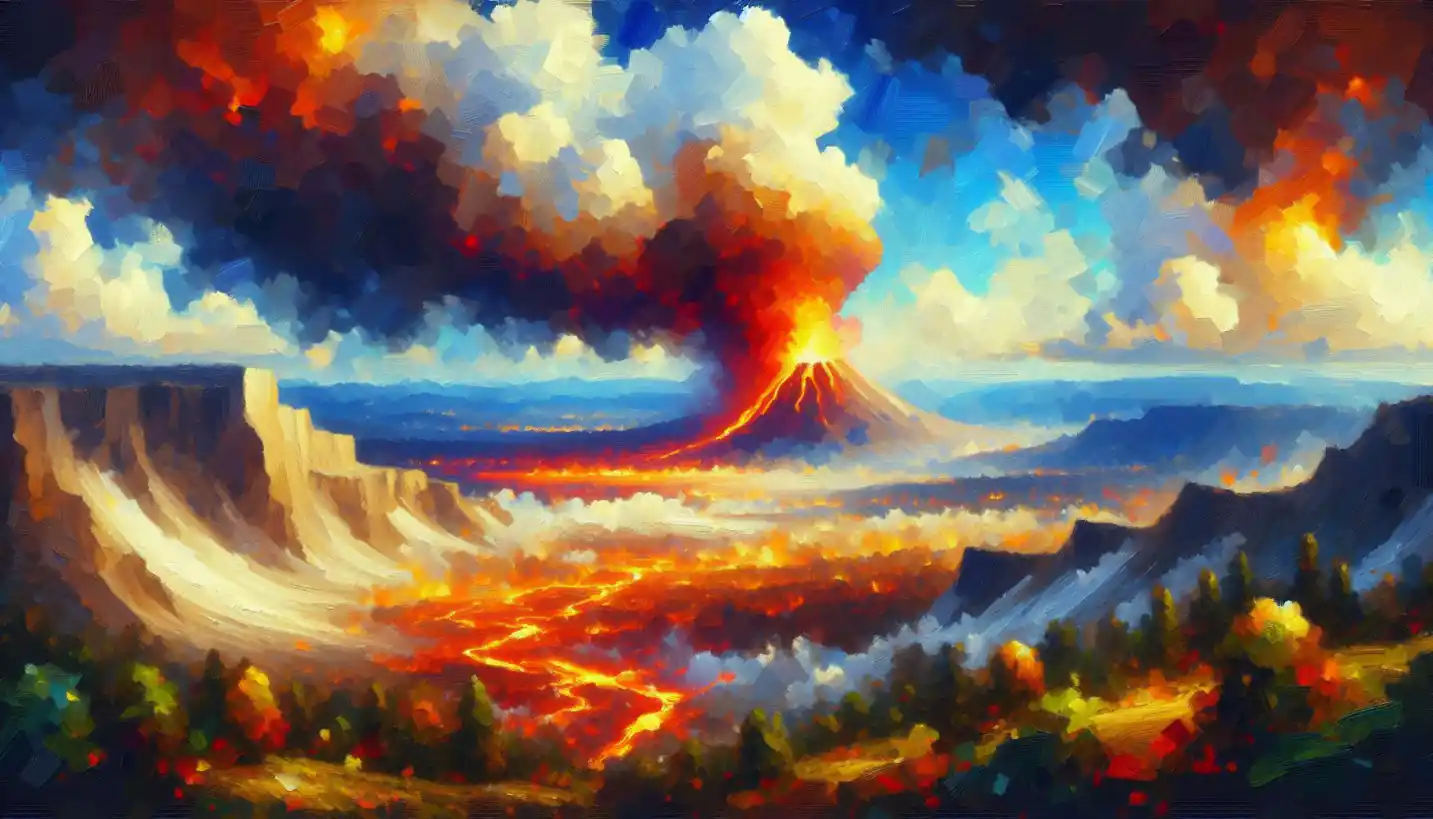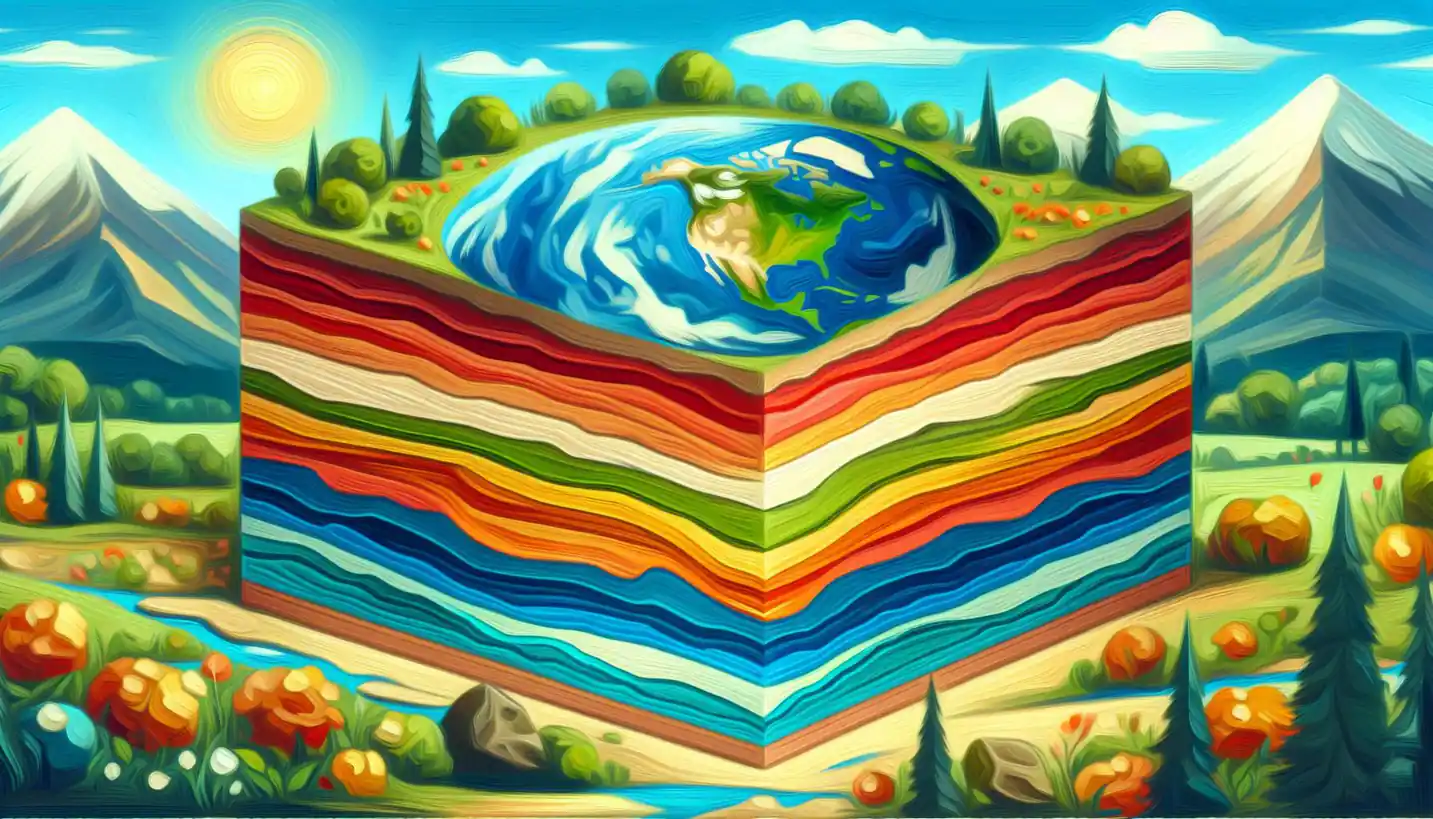· Geography · 5 min read
Paleoclimatology: A Time Machine for Earth's Climate Discoveries
Paleoclimatology is like a time machine, unveiling Earth's ancient climate surprises. Discover how scientists decode past climates from earth's geological records.

Picture a time when our planet was a vast, uncharted landscape, a dynamic world where continents shifted and climate patterns evolved over millions of years. That’s what paleoclimatology, a captivating field within paleogeography, aims to uncover. Let’s dive into the depths of this scientific journey to explore how researchers piece together the Earth’s ancient climates and why it matters today.
Paleoclimatology is a bit like being a detective, but instead of solving crimes, scientists are solving climate puzzles from the past. It’s the study of climates throughout Earth’s history, revealing how our planet has changed and adapted over thousands and even millions of years. By examining clues hidden in rocks, ice cores, tree rings, and ocean sediments, paleoclimatologists reconstruct the atmosphere’s past temperature, precipitation, and atmospheric conditions.
Think of it as a time machine—only the machine is the Earth itself, and the destinations are epochs long gone by. This field doesn’t just look at climate phenomena like the Ice Ages or periods of intense warming; it explains how they happened and what lessons they can teach us about our climate’s future.
Unraveling Earth’s Past Climates
To understand how paleoclimatology works, it’s essential to know what clues these scientists are looking for. Imagine you’re reading a diary, where each entry is written in a different language but contains vital information about the writer’s experiences. In paleoclimatology, these “diary entries” are known as proxies.
Proxies: Nature’s Climate Logs
Proxies are natural recorders of climate, and they come in many forms. Ice cores, for instance, are like climate time capsules. These are long cylinders of ice drilled out from glaciers or ice sheets. As layers of ice accumulate year after year, they trap small air bubbles. These bubbles capture the atmospheric composition at different points in time, providing samples of ancient air that allow scientists to measure past greenhouse gas levels.
Another crucial type of proxy comes from trees. Tree rings, also known as dendrochronology, tell a story of annual climate conditions. Wider rings may indicate wetter or warmer years, while narrower rings could reflect colder or drier periods. Through these rings, trees offer a precise timeline of environmental changes.
Ocean sediments hold a wealth of information, too. Over time, shells of tiny marine organisms settle on the ocean floor. These shells contain isotopes that reflect the water temperatures of their era. By studying these sediments, scientists can deduce changes in sea temperature, crucial for understanding global climate patterns.
Each of these proxies provides individual pieces of the climate puzzle, and together they create a comprehensive image of Earth’s climatic past.
Why Ancient Climates Matter Today
Understanding Earth’s ancient climates is more than an academic exercise; it has direct implications for our future. By analyzing how climate systems have reacted to past events, like volcanic eruptions or shifts in ocean currents, scientists can predict how our current climate might respond to modern challenges.
Take, for example, the study of past Ice Ages. By understanding the conditions that led to the Earth cooling significantly, researchers can unearth insights into how current warming trends might be curbed or exacerbated. This knowledge is invaluable in a time where climate change poses significant challenges to ecosystems and human societies worldwide.
Several periods in the past experienced high levels of carbon dioxide and subsequent warming, providing a natural laboratory for understanding the potential impacts of today’s rising greenhouse gas emissions. By studying these eras, we can forecast changes in sea levels, weather patterns, and biodiversity, and better prepare for them.
The Tools of the Trade
In paleoclimatology, the methods of gathering and analyzing data are as diverse as the proxies themselves. Scientists employ techniques from fields such as geology, biology, chemistry, and physics to decode Earth’s climatic history.
Drilling into Time
Ice core drilling is one of the most direct and enlightening methods. From Antarctica to Greenland, kilometers-long cores are extracted, bringing with them a wealth of data. Each core contains impeccable records of snowfall, volcanic ash, and even pollen deposits, allowing scientists to reconstruct past environments with impressive accuracy.
Radiometric Dating
To pinpoint the age of the samples they study, paleoclimatologists use radiometric dating techniques. This process involves measuring the decay of radioactive elements, such as carbon-14 or uranium, to estimate an object’s age. In dating past climates, this offers an essential timeline of events.
Computer Models
To piece together and predict climatic shifts, scientists also rely on computer models. These are complex simulations that use data from proxies to envisage how climate systems might operate under different conditions. They are crucial for comparing past warming events with current trends and future projections.
The Ongoing Mystery
Despite the advanced techniques used in paleoclimatology, many questions remain. For instance, why did certain regions respond differently to past climate shifts? What were the precise triggers for these changes? These queries keep scientists deeply engaged, as they strive to fill the gaps in our understanding of Earth’s climate history.
Paleoclimatology is not just a window into the past; it’s a mirror reflecting potential futures. By delving into Earth’s climatic archive, we gain tools to foresee challenges and devise solutions essential for navigating the roads ahead.
A Call to Action
With climate change increasingly impacting weather patterns, ecosystems, and human life, paleoclimatology’s role is pivotal. By learning how our planet weathered ancient storms, we gain crucial insights into crafting policies and strategies for sustainability.
As researchers continue to decode the past, their findings empower society to make informed decisions. This collaboration between science and society is vital for mitigating the effects of climate change and fostering a resilient planet.
In essence, paleoclimatology offers more than just history lessons—it provides a narrative that weaves together time, revealing a story where every past lesson potentailly safeguards our future. Let us heed these lessons and embark on a journey to better understand the world, both ancient and new.


